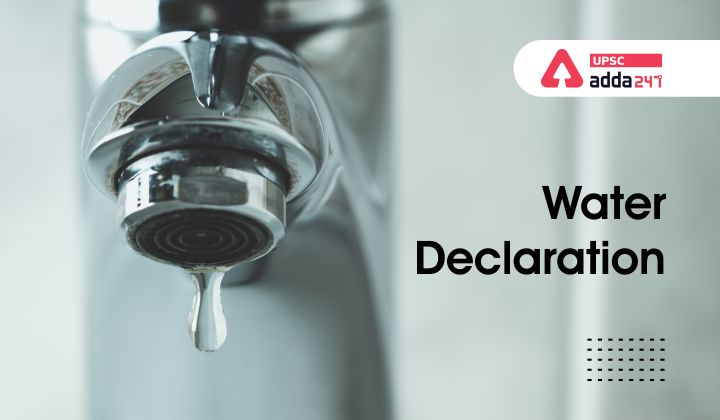Table of Contents
Relevance
- GS 3: Conservation, environmental pollution and degradation, environmental impact assessment.
Context
- World Meteorological Organisation (WMO) has recently endorsed a water declaration to accelerate implementation of SDG 6.
Key points
- Along with water declaration, WMO has also endorsed a Water and Climate Coalition to accelerate implementation of SDG 6.
- WMO has also approved a new vision and strategy for hydrology and an associated plan of action.

Water Declaration aspirations
- By 2030, early warnings for early action related to floods and droughts will be available for people everywhere on the planet to access;
- Policies for water and climate action developed within the sustainable development agenda be integrated to yield maximum benefit for the people;
- Goals will be pursued through partnerships for capacity development, knowledge exchange and information sharing, formulating policies, institutional and legal/regulatory frameworks.
Over 13 Lakh Drinking Water Sample Tested, More Than 1 Lakh Not Fit
Water and Climate Coalition
- WMO has also endorsed a Water and Climate Coalition to promote the sharing and access to integrated hydrological, cryosphere, meteorological and climate information.
- The objective is to plan and operate resilient and sustainable water resources systems at local, national, regional and river basin scales.
- It aims to accelerate progress to the goals of the water-related Sustainable Development Goals, especially SDG6 and boost resilient water adaptation to climate change as well as demographic and socioeconomic development for the future.
- The Water and Climate Coalition will officially be presented at the United Nations Climate Change negotiations, COP26.
City Water Balance Plan
Hydrology Action Plan
- WMO has identified target outcomes to eight long-term ambitions.
Floods
- There should be impact-based end-to-end Early Warning Systems (EWS) for flood forecasting in the context of a broader integrated flood management strategy.
- Public, communities and businesses should have enhanced access to and better capacity to react to official national flood forecasts and warnings locally and globally.
Geospatial Technologies In Water Sector
Drought
- Members should reduce adverse impacts of drought at all levels by implementing integrated drought management systems.
Food Security
- Food security should be enhanced by informed end-users’ decisions at all levels from regional to local.
- The concept of Integrated Water Resources Management (IWRM) including water use and allocations for supporting food production should be widely followed.
Urban Flooding in India
Data
- The value of data accessibility, usability and reliability has been proved to be a strong driver for science development.
- There should be increased discoverability, availability, and use of high-quality hydrological and hydrometeorological data for scientific analysis.
Operational hydrology
- There should be a reduced gap between research and operational hydrology applications; operational hydrology uses improved understanding of Earth system science.
Rainwater harvesting: Countering Water Scarcity
Data on water resources
- Despite the advances in technology and policy, we are far from having comprehensive information on the state of water management across the world.
- Members should implement reliable water resource assessment systems and use these to complete and share information on the availability of water resources.
Sustainable development
- Water lies at the heart of the UN Sustainable Development Agenda.
- Hydrological information of adequate resolution, quality and timeliness should be available and used to make informed decisions on sustainable development at all scales.
Water quality
- Water quality is an integral part of the water cycle.
- There should be increased cooperation at the national, regional and global level on water quality monitoring and water quality data exchange.



 TSPSC Group 1 Question Paper 2024, Downl...
TSPSC Group 1 Question Paper 2024, Downl...
 TSPSC Group 1 Answer key 2024 Out, Downl...
TSPSC Group 1 Answer key 2024 Out, Downl...
 UPSC Prelims 2024 Question Paper, Downlo...
UPSC Prelims 2024 Question Paper, Downlo...





